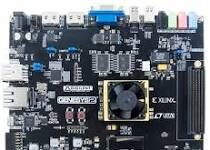Data residing in ERP systems, being a treasure trove of critical business data, truly represents your organization. In the ERP system, all relevant information related to an entity is included. Considering this, for your other business verticals, your ERP data protection strategy must be at least as perfect as your security strategy. We have outlined some ways to develop a strong security strategy for ERP data.
1. User-Access Definition And Regular Audit
For all datasets, every ERP user should have role-based access established. Such access should also be broken down into at least three categories: read-only, export-permitted, and complete access, including editing.
Ensure that users at the basic level log into the ERP with protected user identifiers and clear passwords. You need new passwords often and irregularly. With the assistance of periodic data audits, ERP data security may also be maintained. Audit user accounts to check their work obligations and to assess the need for access to the information they are already authorized to use. Modify access to ERP data depending on the current role if a user’s access has to change because they’ve taken a new position. As these might no longer be needed, don’t just build on their current access levels.
2. The Traditional Methods Of Security Still Work
For hundreds of years, basic manual controls such as segregation of duties have functioned and still work today. Transactions should be approved by at least one person not directly involved in the transaction (financial and data transactions). Another standard security management system employed is serially numbered purchase orders and sales orders. Define formats, including social security numbers, check numbers and part numbers for ERP data where possible. It is possible to deny the processing of data that does not meet the appropriate format.
3. Monitoring Data Usage And Transactions
Create queries while looking for anomalies to monitor the use of ERP data. Start by searching for simple objectives, such as users who accept payments on their own. Start to look for trends then. It may be a warning that trouble is brewing if the transaction volume of an ERP customer increases or decreases in an unexpected way.
4. Track And Secure External Transactions
ERP data security is also more of a problem for external transactions. They include cloud transmissions and also those connected to in-house networks. Your connections should always be stable, and you should periodically check your protection. Consider encrypting the data flow that is beyond your power. The type of devices that are linked to your ERP system may also be monitored. Do these devices comply with the BYOD guidelines of your firm? It is time for a quick search to get an idea.
Conclusion
There are now integrated ERP data protection features in many ERP software products on the market, but they should not be seen as anything more than a safety net. The knowledge of your workers and the dedication of your administrators are the foundations of a successful data protection strategy. A wide range of features that provide comprehensive data security through ERP is part of the latest data protection technologies. They streamline businesses’ data processing activities and also assist in compliance with the relevant data protection law requirements.
Also Read: The Benefits of Implementing a Single Sign-On Solution for Your Enterprise











